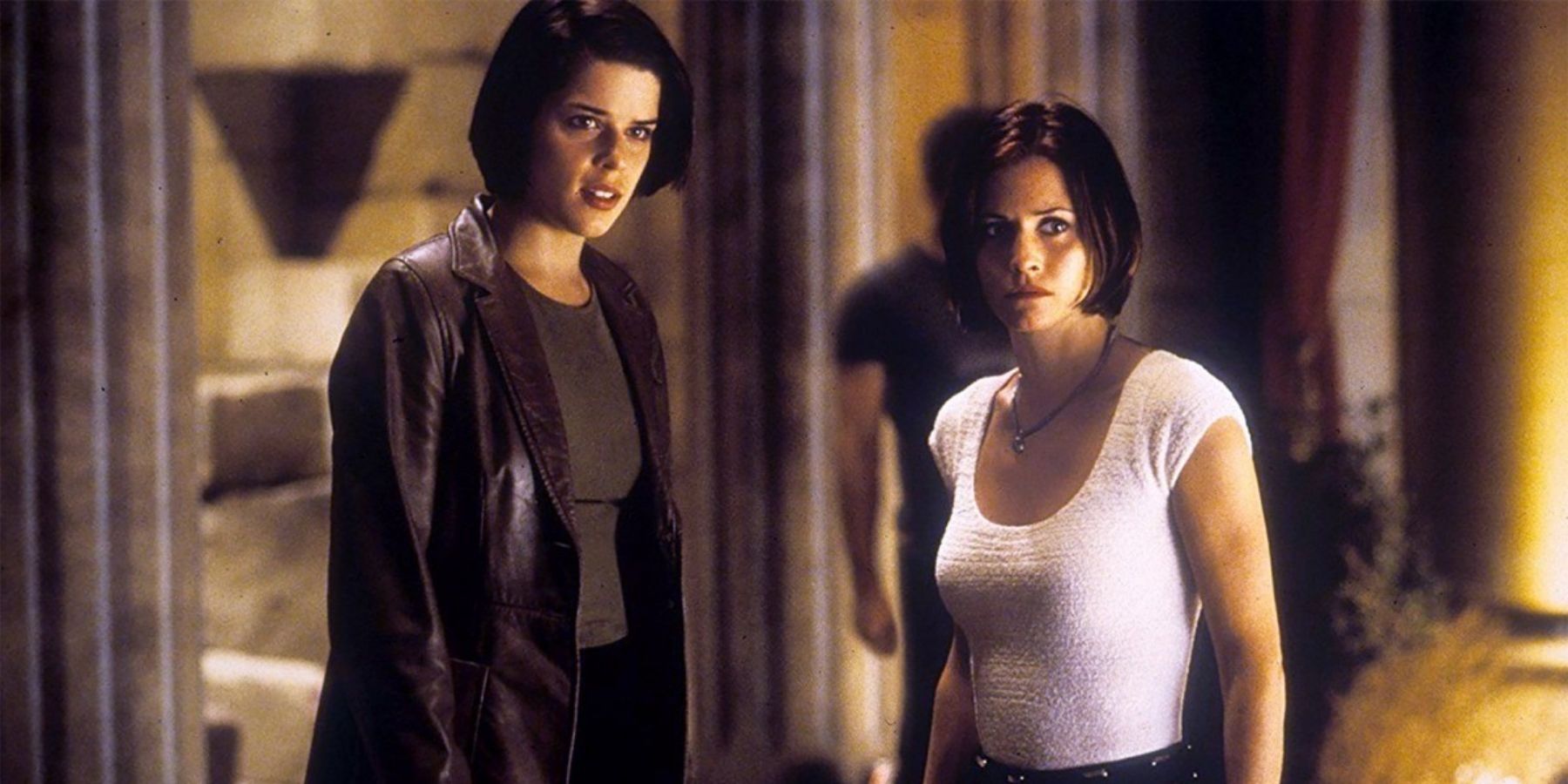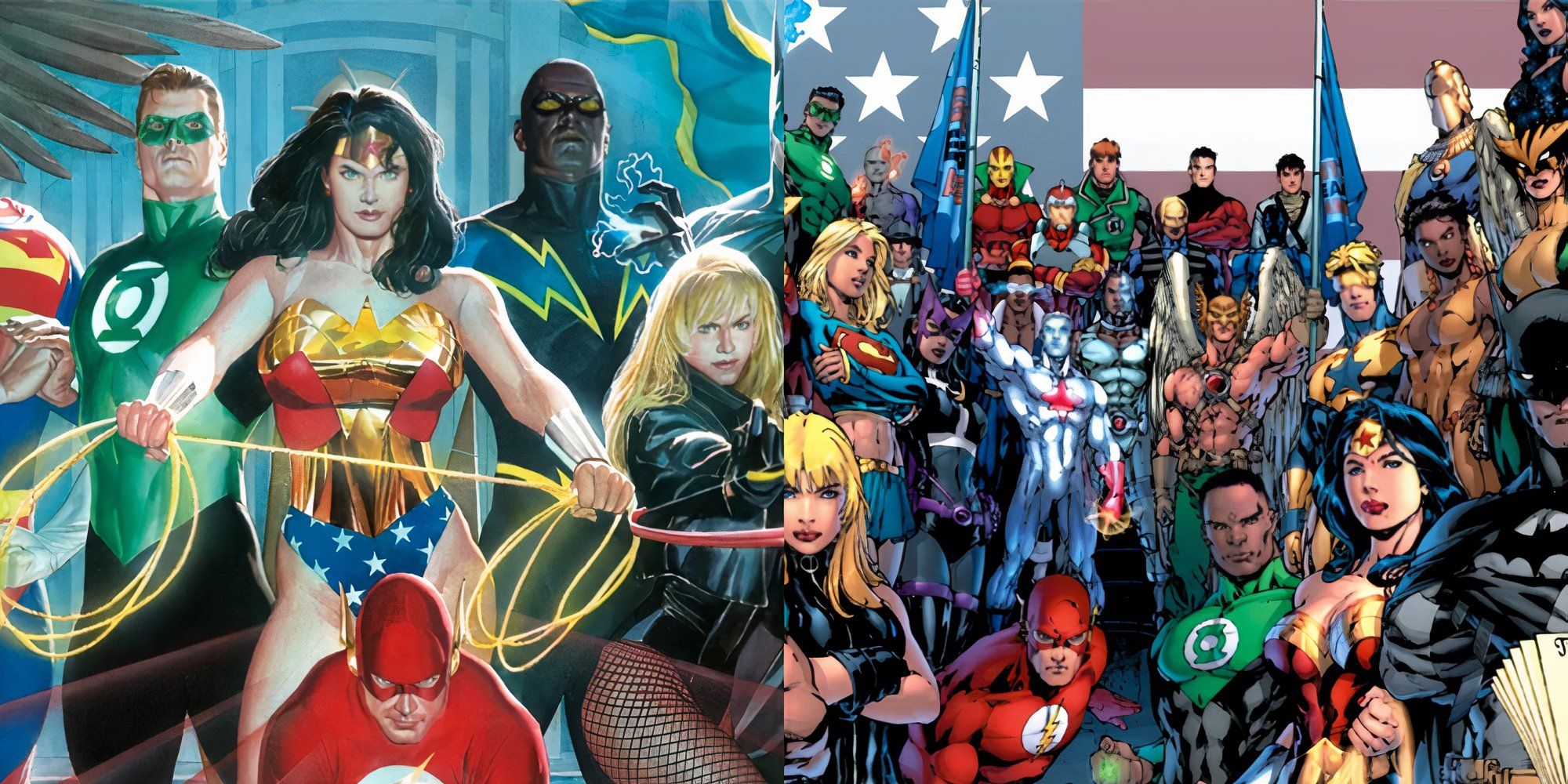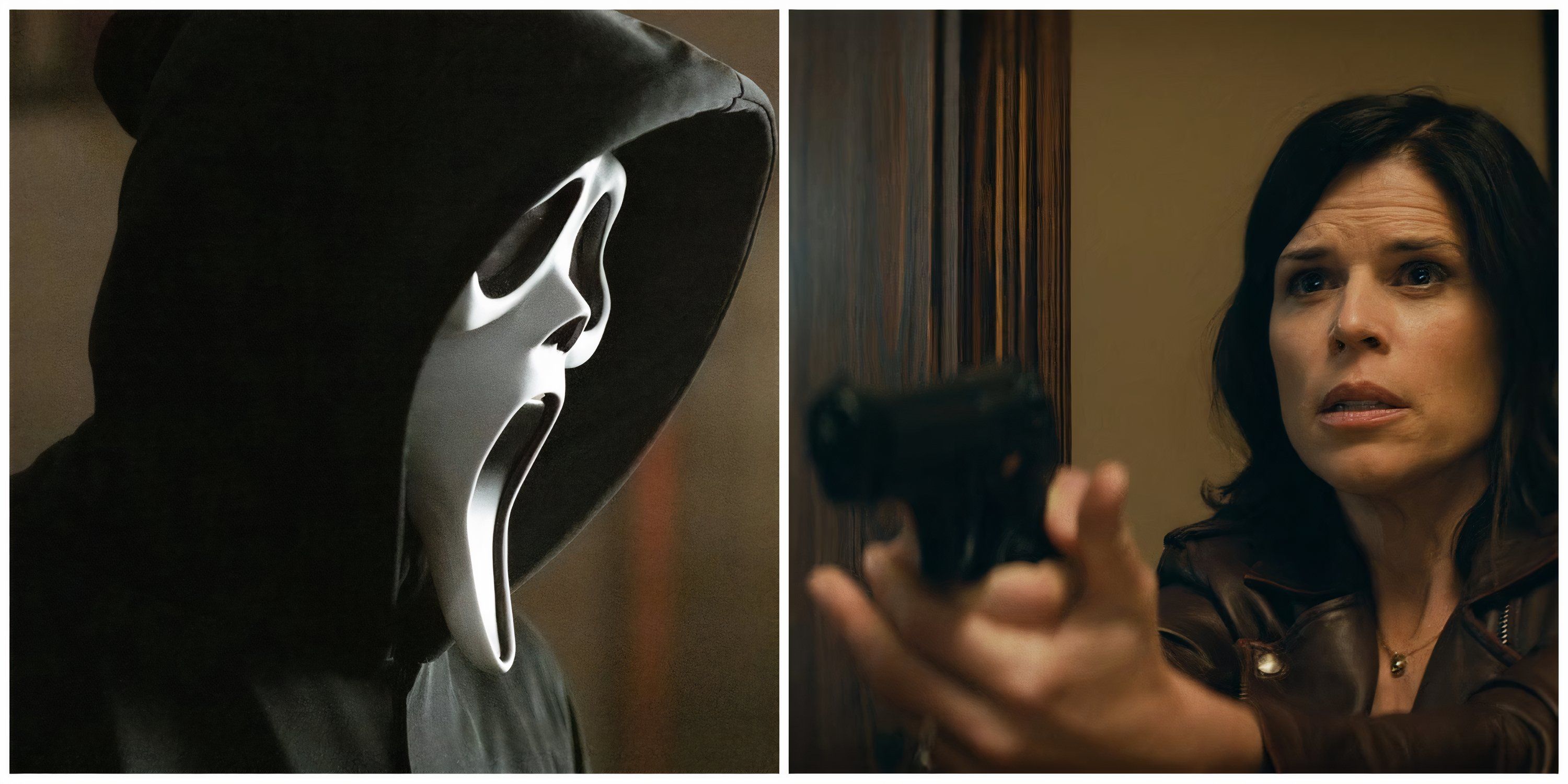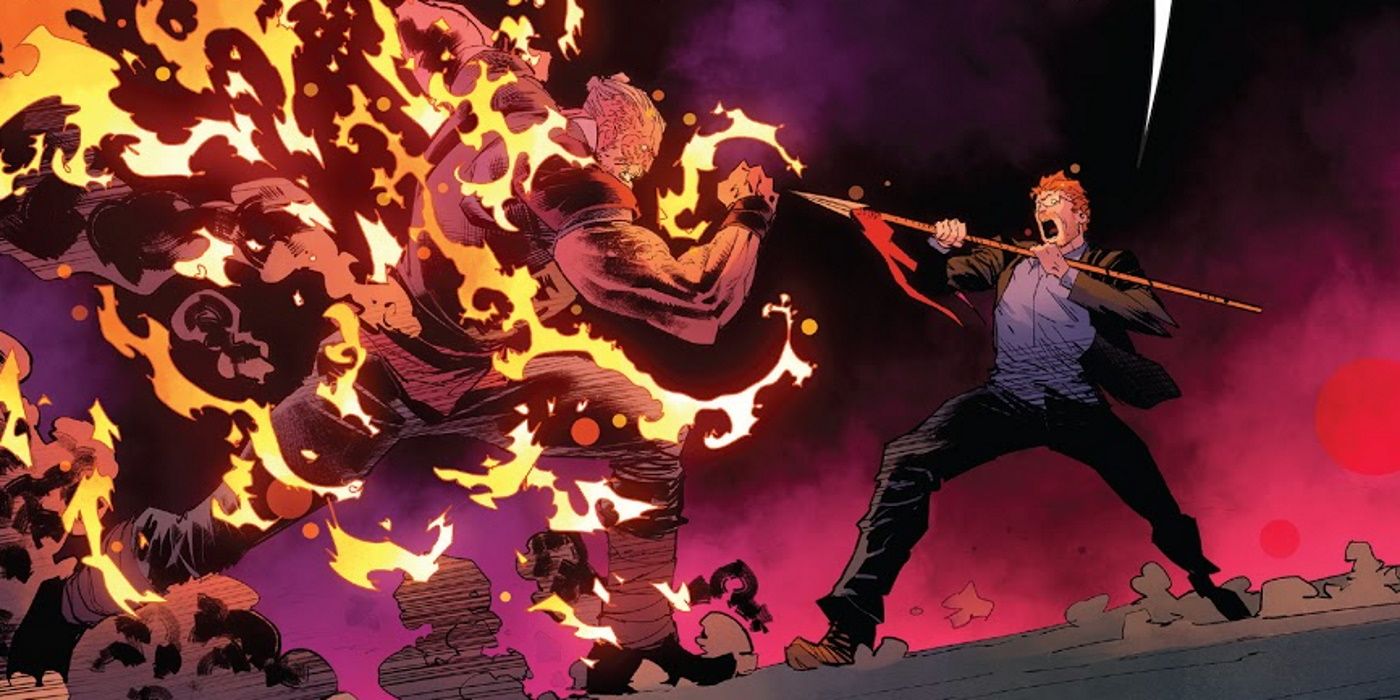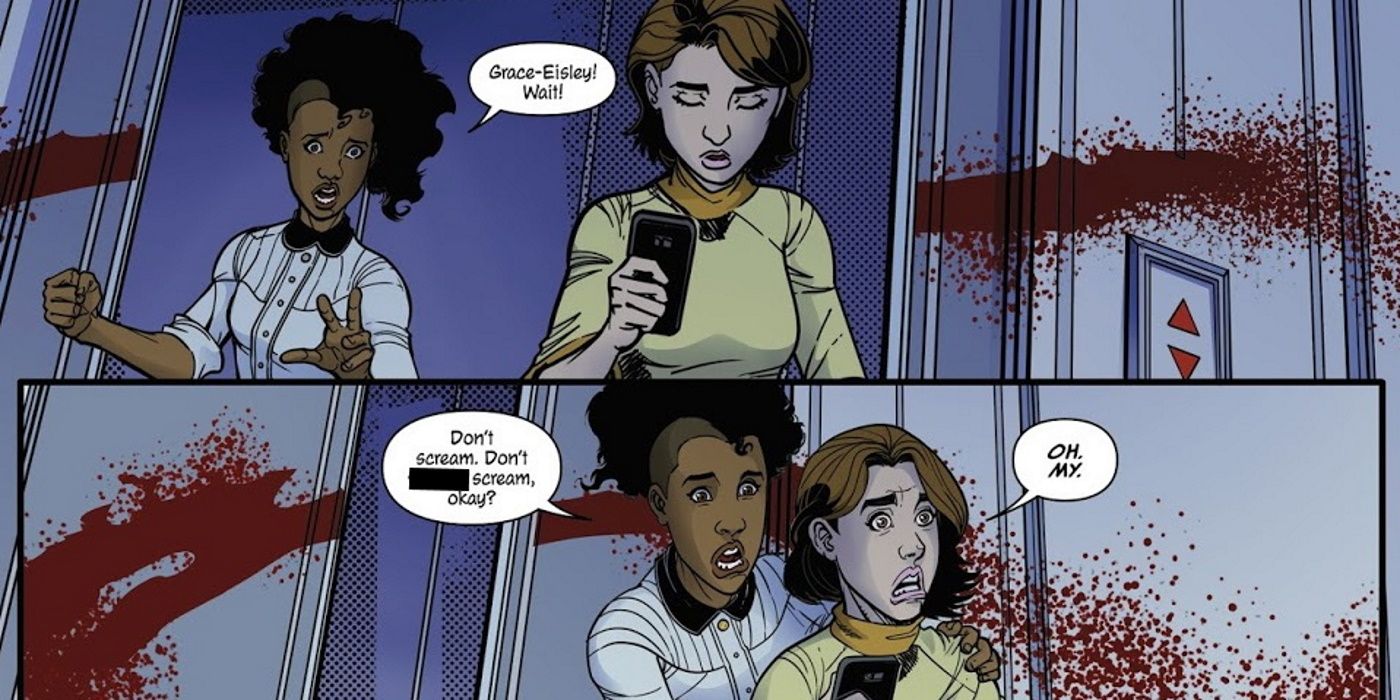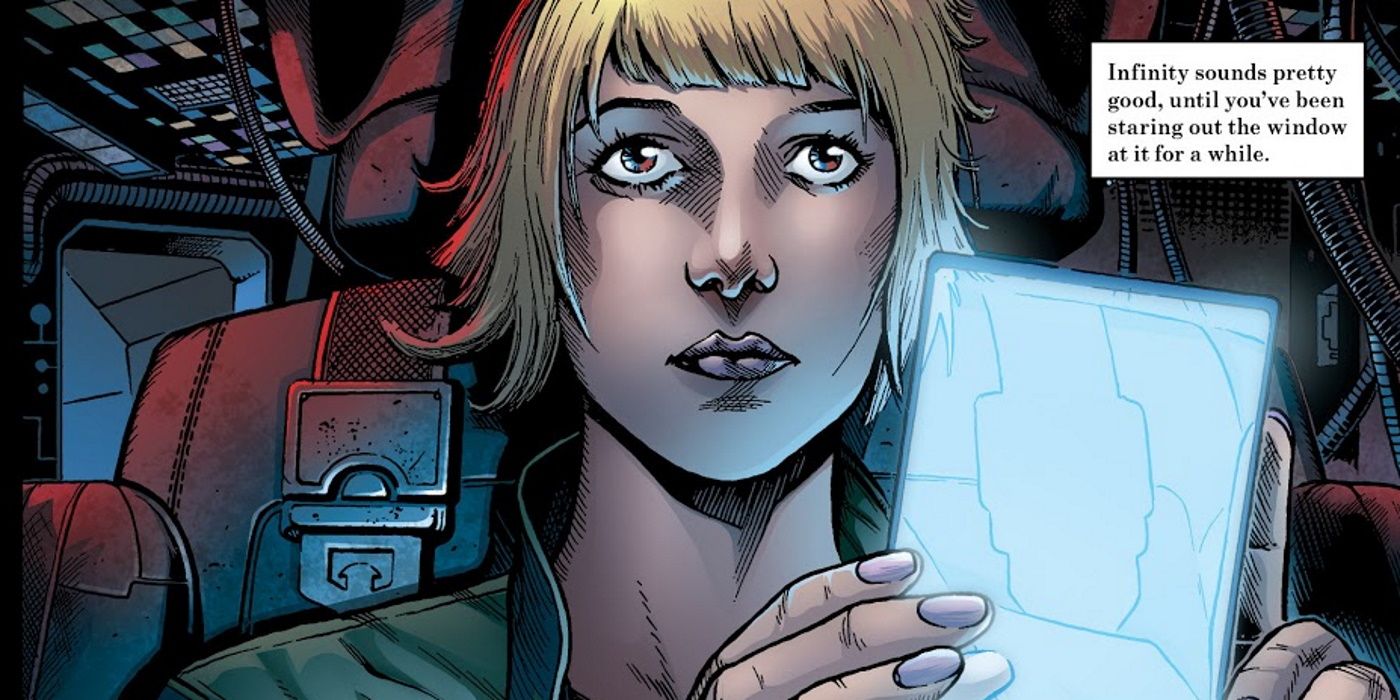The dirty secret of the North American comic book industry, besides how much of it is driven by British and Canadian talent (thanks, health care!), is that in 2020, it's largely an intellectual property farm for TV and film.
This isn't exactly new, save for its relative intensity. There's been a sort of "gold rush" on comics IP since the '90s, owing to the success of adaptations like Teenage Mutant Ninja Turtles, Jim Carrey's The Mask (based on an obscure, ultraviolent Dark Horse book), and the X-Men Saturday morning cartoon. Since then, any sufficiently successful comic is likely to get a call about the film and TV rights sooner or later. This only accelerated in the '00s, as the Internet made self-publishing easier than ever before, and Image Comics arose as a go-to publisher for creator-owned indie books from all over the Western world.
What's changed is that before, a comic adaptation that didn't get stuck in development hell (a film version of Tim Seeley's horror parody Hack/Slash has been trapped in production for over 14 years, despite "scantily-clad Goth girl murders undead killers with baseball bat" being the single easiest film pitch ever written) would often end up unrecognizable by comparison to its source material (2017's Atomic Blonde, based on Antony Johnston's much lower-key 2012 Cold War one-shot The Coldest City) or would play down its origins (the Men in Black series, or the 2005 film noir A History of Violence).
Now, it's more likely that a comic, particularly one that had a long run, will end up made into a TV show, following the success of Robert Kirkman's The Walking Dead, and more crucially, that it will actually make it into full production. While they haven't all been successes, Deadly Class, Vagrant Queen, Stumptown, and especially The Umbrella Academy all indicate that the wave of comics-to-TV has yet to crest.
It's actually a bit difficult these days to find a comic that hasn't been optioned, at least not publicaly, but it's not impossible. Here are some picks for comics that have, at time of writing, been overlooked, and which could be the basis for the next Walking Dead-caliber pop-culture juggernaut.
Suicide Risk (2013)
This is vaguely in the same anti-superhero genre pool as The Boys, which is why it's on this list. Suicide Risk has also got to be one of the all-time grand examples of a book that dramatically deviated from its origins, which is why it seems like it's fallen into relative obscurity. It's almost a modern cop story in issue #1 and by its conclusion in #25, it's become a bizarre alternate-universe fantasy.
It gets off to a promising start, though, particularly in a period where the general public can't get enough superheroes or police procedurals. In Mike Carey and Elena Casagrande's Suicide Risk, Los Angeles is being torn apart by a superhuman crime wave, where it seems like there are more costumed villains every day, up against outgunned cops and a relative handful of short-lived "heroes."
One cop, Leo Winters, manages to survive an encounter with several of those supervillains, although his partner loses an arm. Leo discovers in the aftermath that they have a supplier. All of the villains have been in contact with a couple of seemingly small-time dealers, who have been selling access to a device that can activate a person's superhuman potential. When Leo decides to gain powers for himself, in order to get some payback for his partner, things proceed to get insane.
Mike Carey has a long but surprisingly quiet career, as the author of the Vertigo series Lucifer and The Unwritten, a number of England-set urban fantasy novels starring freelance exorcist Felix Castor, and a lengthy run on the Marvel comic X-Men: Legacy. He's also got a few years on Hellblazer under his belt. It's actually weird that Carey isn't better-known than he is, and Suicide Risk is an interesting run through his particular brand of the New Weird. Even if it just stayed in a crime-ridden version of Los Angeles for six seasons and a movie, Suicide Risk seems like an easy candidate for a cops-vs.-capes hour-long drama.
Once & Future (2019)
This is probably the closest thing to a slam dunk on this list. Once & Future's writer, Kieron Gillen, already has a TV project in the works with an adaptation of his "gods are real and dangerously British" modern-mythology book The Wicked & The Divine. Once a comic author gets one book optioned, several more are quick to follow, and Once & Future is one of the most, if not the most, TV-friendly of any of Gillen's creator-owned works.
The elevator pitch for Once & Future, drawn by Dan Mora (Hexed, the recent comics reboot of Buffy the Vampire Slayer) with colors by Tamra Bonvillain (Wayward, Rat Queens), is basically "King Arthur is real, he's back, and he's a bastard." Duncan McGuire finds out over the course of one bad night that many of the monsters of British myth are real, and his grandmother Bridgette used to hunt them down for a living. Now she's been dragged out of retirement by a new case, but is too old to do all her own heavy lifting, and forces Duncan at gunpoint to come along for the ride.
A group of occultists are out to force King Arthur to awaken, as they think modern Britain, with all its kids and drugs and loud music, is clearly in the grips of its "darkest hour." As Bridgette points out, however, the prophecy of Arthur's return can be read in one of two ways. Arthur may come back in order to save Britain, or his awakening might be what dooms it.
Gillen has been open about the fact that Once & Future was inspired by Brexit. It's not intended to be explicitly about politics, but the conversation that surrounded Brexit led Gillen to think about British identity in conjunction with its mythology and the general feel of an old-school adventure movie. The book likely hits very differently for a British audience, particularly once its main arcs spin up and it starts exploring its antagonists' motivations, but Americans can still enjoy it as a story about a cantankerous old woman with a trunk full of guns, her constantly-horrified grandson, and the bloody secret history of the British Isles. If nothing else, Bridgette McGuire is a custom-made role for Helen Mirren, on the basis that there are never enough movies with Helen Mirren just marauding around the place with enormous guns.
Black Magick (2016)
This will probably get optioned any second. Black Magick is an urban fantasy series by Greg Rucka with gorgeous black and white pencils by Nicola Scott (Birds of Prey). Rucka got in the news earlier this year for the Netflix adaptation of his creator-owned comic The Old Guard, as well as the sadly short-lived ABC show based on his PI book Stumptown. On top of that, Black Magick is about implausibly attractive police officers in Not Portland Really, so that gives it a good chance for series pickup in a day and age when roughly 75% of the prime-time lineup is basically about various kinds of hot cops.
However, it's also about modern witchcraft. Rowan Black is a homicide detective with the Portsmouth PD, as well as a practicing witch in a centuries-old tradition. When she's called in to talk to a stranger who's taken hostages, and who knows many of Rowan's secrets, it's the start of a series of occult events that surround Rowan, her coven, and the history of this weird just-south-of-reality world that Rucka and Scott have built.
Black Magick started strong in 2016, but Rucka was forced to put it on hiatus after issue #4 when he got a high-profile job on DC's Wonder Woman, which killed a lot of the book's word of mouth. Like most other comics in the American market, it then was forced to take another long break from publication courtesy of COVID-19. Even a lot of the book's fans remain unsure as to its status, which probably explains why it hasn't been optioned like much of the rest of Rucka's work.
The action has heated up considerably in recent issues, with a net of bad decisions and new enemies slowly closing around Rowan. While a TV adaptation would probably either end up controversial (because it features a frequently-nude neo-pagan as a protagonist who's just started dating her female police partner) or watered down ("hey, it's sort of Charmed but they're attractive cops"), Black Magick does feel like an easy lay-up. After all, iZombie got four seasons, so why not a witch detective?
The Strange Talent of Luther Strode (2011-2016)
This one's all about the glorious ultraviolence. Luther Strode is one of the books that put Tradd Moore on the map, who favors a hyperkinetic, fluid style that makes every fight scene look like a lost, higher-budget episode of Aeon Flux. The rest of the book isn't bad, but Moore carries the whole series on his shoulders. Watching people get torn apart like chicken wings has never seemed this balletic.
A bullied high school student sends away for a booklet called the "Hercules Method," which purports to make its users into strongmen. To everyone's surprise including Luther's, it actually works; Luther Strode goes from skinny to jacked to superhuman virtually overnight. Naturally, his buddy Pete's first thought is that Luther should become a superhero.
The catch is that the "Hercules Method" is the modern version of a manual that dates back to the start of human civilization, which contains all there is to know about the art of murder. Luther didn't have an origin story; he accidentally unlocked the secret to becoming Jason Voorhees, and in so doing, got on the radar of all the people who've previously benefited from the book.
Luther Strode is spread out across three six-issue miniseries, each of which is a different chapter in Luther's evolution as a character, from wannabe superhero to embittered vigilante to... well, kind of a violent kung-fu Jesus. It's complicated. The last volume, 2016's The Legacy of Luther Strode, is also where Tradd Moore really goes for broke with the art, and finishes the series on a distinctly high note.
The real problem that Luther Strode would present as a TV show, or as three movies, is that it would require either a modern genius as a fight choreographer or a significant effects budget, and it's not getting out the door without an R rating. It'd actually be a natural fit for a studio like Powerhouse Animation, which made Netflix's Castlevania show.
Breathless (2018)
Patrick Shand discovered one day that there were Buffy and Angel comics, which got him started on the road to becoming a comic book writer himself. Most of his output to date is for Zenescope, the diet-porn company that publishes Grimm Fairy Tales. Despite that, Shand has some chops with horror, fantasy, and romantic comedy, as exhibited in books like Robyn Hood, Snap Flash Hustle, and his Kickstarted indie, the lesbians-at-magic-school comic Destiny, NY. If he often comes off like a more self-aware Joss Whedon, well, it's him wearing his influences on his sleeve.
Shand describes Breathless, naturally, as "Buffy the Vampire Slayer if the villains were big pharma." On an Earth where monsters are real but kept secret, Scout is a cryptozoologist who studies various alien species. When she finds a substance inside one of them that seems to be an instant cure for her chronic asthma, the discovery stays secret for exactly as long as it takes for her motormouth lab partner to get bored on Twitter. Six months later, a team of assassins show up to eliminate Scout. Her only allies end up being her lab partner, a succubus she sometimes pays for information, and a couple of stray dog-like demons.
Breathless feels like it's too short for its own good at four issues, but that also means it isn't padded out. More importantly, it hints at a potentially big universe of corporate antagonists vs. genuine demons, with Scout caught between all these warring powers. As a premise, it's very American and extremely on the nose—what if all those conspiracy theories about companies not wanting to release the cure for cancer were actually real?--but still somehow works. A proper adaptation of Breathless could have as much to say about the American struggle for health care as Buffy did about the teenage experience, and in the same just-barely-a-metaphor sort of way.
Caliban (2014)
Between AMC's Preacher and Amazon's The Boys, there are likely production assistants all over California reading Garth Ennis's body of work by now, and some of them probably deserve an apology. While many of his creator-owned books are likely impossible to adapt for screen, because they're too gross (The Pro, Dicks), too tied to a larger universe (Hitman, about a small-time assassin in Gotham City, also known as the book where somebody puked on Batman), or too ridiculous (Goddess, Jimmy's Bastards), one of his horror comics is tailor-made for film, and surprisingly obscure besides.
That's Caliban, one of several miniseries that Ennis has published through the notorious indie publisher Avatar Press. While Avatar now mostly seems to have retreated straight back into a more pornographic version of the '90s, there was a stretch in the 2000s and 2010s where it was a clearing house for whatever warped ideas came out of various UK-based comic writers' minds. In Caliban's case, it's a straightforward horror book, with art by Facundo Percio. It's not without its splatterpunk moments, like the unfortunate person who dies by having a lit welding torch jammed down his throat, but by both Avatar's standards and Ennis', it's comparatively restrained. It's easy to imagine it having landed at Vertigo, once upon a time.
A few generations into the future, a small support crew runs the systems on the transport starship Caliban, moving a population of miners in cryosleep to their next job. Suddenly, and against all previous knowledge of how drive systems work, the ship slams into something else while in hyperspace, and drops back into the universe half-fused with a derelict vessel. When the survivors of the crash explore the wreck, they discover the first proof humanity has ever seen of sentient alien life... but it's all dead, except for a single, homicidal survivor.
The biggest problem with Caliban, all told, is the nagging feeling that something a lot like it has been done already and it was called Event Horizon. That's not the worst inspiration a book could have, though, and Caliban is much more of a straightforward monster movie, complete with an antagonist that could give a character actor a lot of nice scenery to chew. If nothing else, the last issue of Caliban leads up to a satisfying conclusion, and it'd be worth it just to see that final fight scene adapted to screen.

